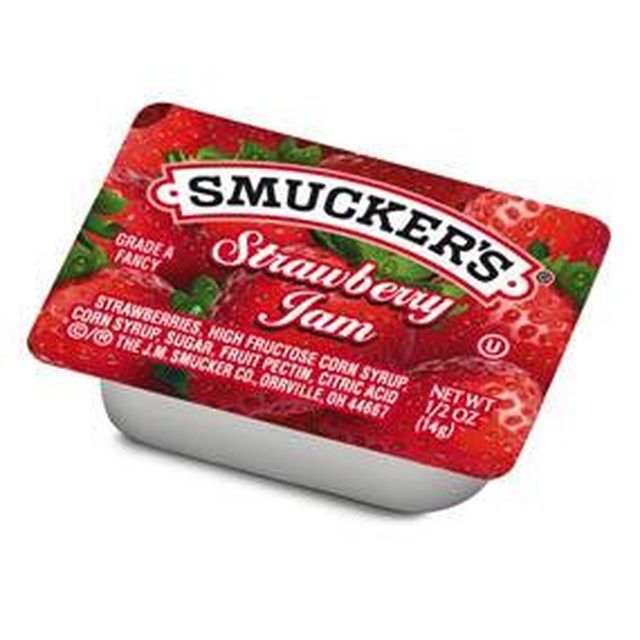Bulbs
Flower Basics
Flower Beds & Specialty Gardens
Flower Garden
Garden Furniture
Garden Gnomes
Garden Seeds
Garden Sheds
Garden Statues
Garden Tools & Supplies
Gardening Basics
Green & Organic
Groundcovers & Vines
Growing Annuals
Growing Basil
Growing Beans
Growing Berries
Growing Blueberries
Growing Cactus
Growing Corn
Growing Cotton
Growing Edibles
Growing Flowers
Growing Garlic
Growing Grapes
Growing Grass
Growing Herbs
Growing Jasmine
Growing Mint
Growing Mushrooms
Orchids
Growing Peanuts
Growing Perennials
Growing Plants
Growing Rosemary
Growing Roses
Growing Strawberries
Growing Sunflowers
Growing Thyme
Growing Tomatoes
Growing Tulips
Growing Vegetables
Herb Basics
Herb Garden
Indoor Growing
Landscaping Basics
Landscaping Patios
Landscaping Plants
Landscaping Shrubs
Landscaping Trees
Landscaping Walks & Pathways
Lawn Basics
Lawn Maintenance
Lawn Mowers
Lawn Ornaments
Lawn Planting
Lawn Tools
Outdoor Growing
Overall Landscape Planning
Pests, Weeds & Problems
Plant Basics
Rock Garden
Rose Garden
Shrubs
Soil
Specialty Gardens
Trees
Vegetable Garden
Yard Maintenance
How Are Strawberries Processed?
How Are Strawberries Processed?. Strawberries are a nearly $1 billion industry in the United States, with 83 percent of that production coming from California. Approximately 26 percent of the berries grown in the United States are frozen, freeze-dried or included in strawberry-based food products.
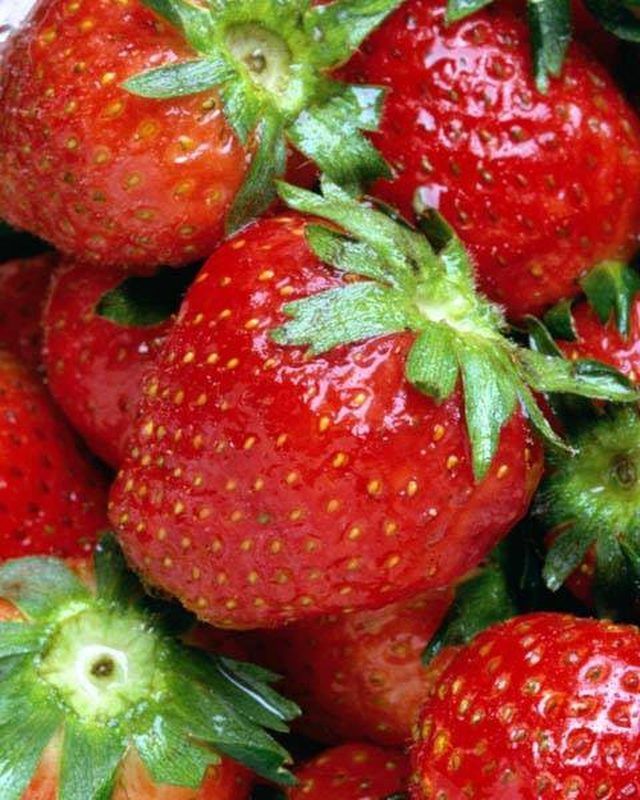
Strawberry Production in the U.S.
Strawberries are a nearly $1 billion industry in the United States, with 83 percent of that production coming from California. Approximately 26 percent of the berries grown in the United States are frozen, freeze-dried or included in strawberry-based food products.
Strawberry Plant Types
For purposes of mass production, there are two types of strawberry plant: everbearing and June-bearing. Everbearing plants produce strawberries gradually throughout the growing season, while June-bearing plants produce one large crop for harvest, and are the preferred type for industrial production.
Stemming, Washing and Sorting
Once strawberries are field picked, they are stored in "first-in/first-out" coolers, which ensure that the berries are sorted and processed as soon as possible after being harvested. Stems are then removed by hand, and the strawberries are washed in agitating water. The strawberries proceed to a vibratory sorter, where they are separated by size and sent on size-appropriate conveyor belts to be hand-inspected for defective fruit removal.
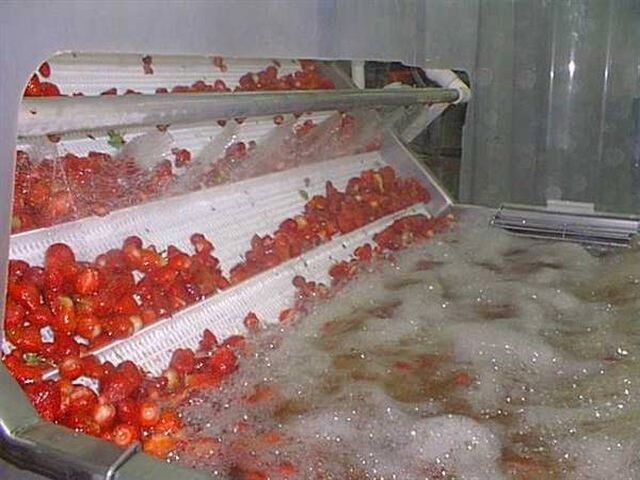
Frozen Strawberries
Strawberries destined to be frozen are then machine-loaded into large buckets. The buckets are then loaded onto pallets and flash-frozen.
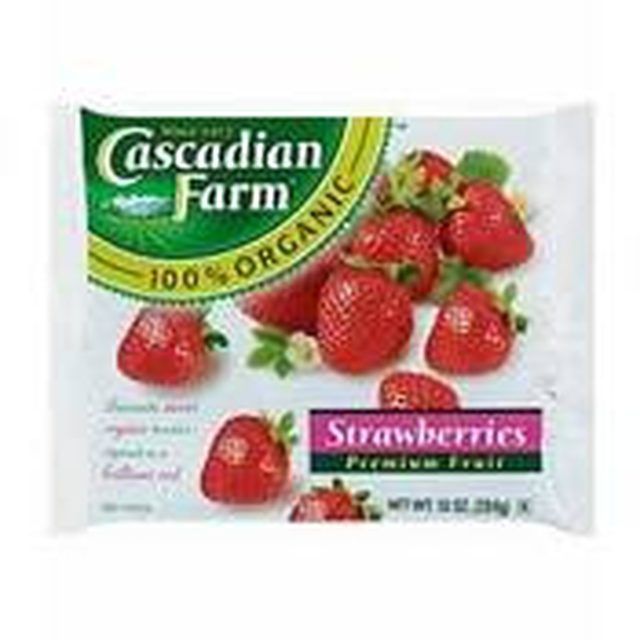
Freeze-dried Strawberries
Strawberries to be freeze-dried for inclusion in snack packages and cereals are taken from flash-freezer to a vacuum that allows the majority of the water (up to 98 percent) in the berries to vaporize. First heat and then low temperatures are subsequently applied to the fruit in order to solidify the nearly waterless fruits to a solid and stable state.
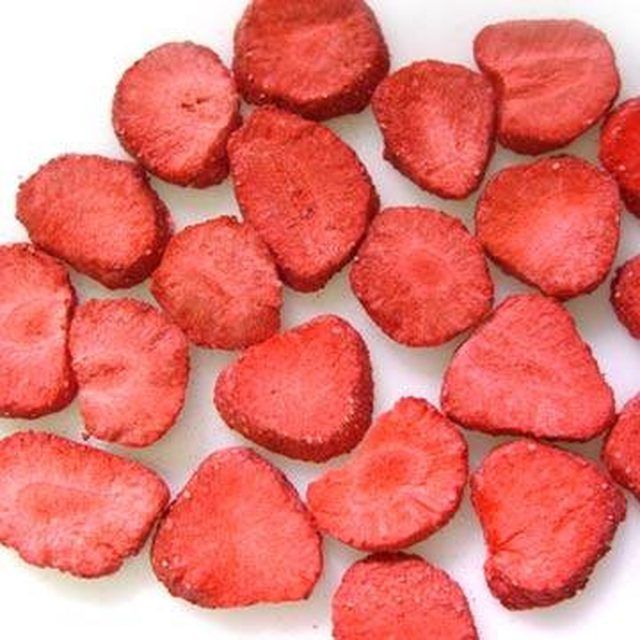
Strawberry-based Products
Other strawberries are distributed to the food industry in either fresh or frozen state for use in the production of jams, jellies, syrups, juices and teas.
